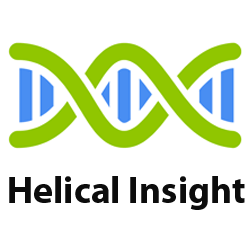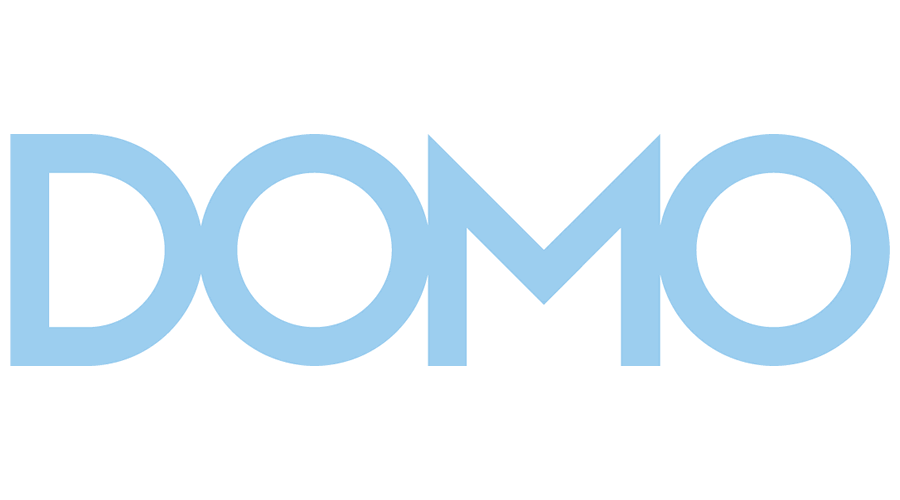In today’s data-driven world, the importance of interpreting raw data into actionable insights cannot be overstated. Businesses, analysts, and decision-makers rely on data visualization tools to transform complex datasets into comprehensible visual formats like charts, graphs, and dashboards. These tools not only enhance decision-making but also make it easier to communicate data-driven insights across organizations.
If you’re looking to explore the best data visualization tools, this guide will introduce you to the top five options that are redefining the way we analyze and present data.
Transform your data into decisions with Helical Insight — where open source meets limitless data visualization possibilities!
What is a Data Visualization Tool?
A data visualization tool is software designed to help users create visual representations of data, making it easier to understand trends, outliers, and patterns. These tools are essential for business intelligence, aiding in simplifying large data volumes and delivering valuable insights.
From interactive dashboards to real-time analytics, the best data visualization tools cater to various industries, helping users from marketing teams to data scientists present their findings more effectively.
Why Data Visualization Matters
In a world overflowing with data, visualization is key to uncovering the story behind the numbers. Here are a few reasons why data visualization is so crucial:
- Improved Understanding: Charts and graphs simplify complex datasets, making them easier to interpret.
- Enhanced Decision-Making: Visual insights enable stakeholders to make more informed decisions quickly.
- Data Storytelling: Visualization brings data to life, making it engaging and impactful for presentations.
- Identifying Trends: Spotting trends, outliers, and patterns becomes effortless with the right visualizations.
Now that we’ve established the importance of data visualization, let’s explore the top data visualization tools available today.
Transform your data into decisions with Helical Insight — where open source meets limitless data visualization possibilities!
Top 5 Data Visualization Tools in 2025
1. Helical Insight

Helical Insight is an opensource business intelligence framework that offers extensive ad-hoc reporting capabilities. It provides a highly customizable platform with a strong focus on flexibility and scalability.
Key Features:
- Drag-and-drop report creation.
- Advanced data visualization options.
- Integration with multiple data sources.
- Customizable dashboards.
- Strong security features.
To download and try for free, plz register here. Reach out to support@helicalinsight.com for any more questions.
2. Power BI

Power BI by Microsoft is a versatile data visualization tool offering seamless integration with other Microsoft products like Excel, Azure, and SharePoint. Known for its affordability and accessibility, it’s a favorite among small to medium-sized businesses.
Features:
- Pre-built templates and visualizations.
- Real-time streaming for live dashboards.
- Natural language query capabilities for non-technical users.
- Advanced machine learning integrations for deeper analytics.
Who It’s Best For: Businesses using the Microsoft ecosystem and those seeking a cost-effective solution.
Transform your data into decisions with Helical Insight — where open source meets limitless data visualization possibilities!
3. Qlik Sense

Qlik Sense is a self-service data visualization tool powered by an associative analytics engine. It allows users to explore data interactively without being limited by query-based constraints.
Features:
- Smart search for instant access to data insights.
- AI-assisted analytics for guided visualizations.
- Scalability for enterprise use.
- Supports on-premise, cloud, and hybrid deployments.
Who It’s Best For: Organizations that need a highly customizable solution for complex datasets.
4. Domo

Domo is a cloud-based data visualization tool tailored for modern businesses that value accessibility. With its mobile-first approach, Domo ensures that data insights are always within reach.
Features:
- Mobile-friendly dashboards for on-the-go decision-making.
- Pre-built connectors for various applications like Salesforce and Google Analytics.
- AI and machine learning-powered forecasting.
- Data sharing and collaboration tools.
Who It’s Best For: Businesses looking for mobile-friendly and cloud-based solutions.
5. Looker

Looker, part of Google Cloud, is a data visualization tool focused on delivering insights through embedded analytics and advanced reporting. Its flexibility and integration with Google services make it a powerful choice for many.
Features:
- SQL-based modeling for advanced users.
- Embedded analytics to integrate insights into existing applications.
- Supports data governance with secure sharing options.
- Rich customization options for reports and dashboards.
Who It’s Best For: Enterprises working with Google Cloud and needing embedded analytics.
Transform your data into decisions with Helical Insight — where open source meets limitless data visualization possibilities!
How to Choose the Best Data Visualization Tool
Selecting the right tool depends on your specific needs and business goals. Consider the following factors:
- Ease of Use: Choose a tool that matches your technical expertise.
- Integration: Ensure compatibility with your existing data sources and platforms.
- Scalability: Look for a solution that can grow with your organization.
- Cost: Assess the pricing model and ROI based on your use case.
- Support: Check for community support and availability of training resources.
Final Thoughts
The rise of data visualization has transformed how businesses interact with their data. With tools like Helical Insight, Tableau, Power BI, Qlik Sense, Domo, and Looker, organizations can harness the power of data to drive decisions, communicate insights, and stay competitive.
When exploring the best data visualization tools, it’s crucial to align your choice with your specific needs, whether you prioritize real-time analytics, ease of use, or enterprise-level scalability. With the right tool in hand, you’ll unlock the full potential of your data and pave the way for smarter decision-making.
If you’re still unsure which tool is the right fit, start by exploring free trials or demos to see how each platform fits your requirements. Happy visualizing!
Transform your data into decisions with Helical Insight — where open source meets limitless data visualization possibilities!
FAQs: Top 5 Data Visualization Tools for 2025
1. What are the top data visualization tools to consider in 2025?
In 2025, the top data visualization tools include Helical Insight, Tableau, Power BI, Looker, and Qlik Sense. Among them, Helical Insight stands out for its open-source flexibility, developer-friendly architecture, and enterprise features at a flat price.
2. Which is the best free or open-source data visualization tool in 2025?
Helical Insight is widely considered the best open-source data visualization tool in 2025. It combines self-service analytics, canned reporting, embedding options, and natural language querying—without the high costs of proprietary tools.
3. How do I choose the right data visualization tool in 2025?
Key factors include pricing model, ease of use, data source support, customization options, and self-service capabilities. Helical Insight scores high across all these areas, making it a strong choice for businesses of all sizes.
4. What makes Helical Insight different from Tableau or Power BI?
Unlike Tableau or Power BI, Helical Insight is open-source, supports direct developer customization, and offers a flat pricing model. It also features NLP-based query generation, workflow automation, and cross-database joins out of the box.
5. Is there a data visualization tool that supports both self-service and embedded analytics?
Yes, Helical Insight supports both. It allows business users to build reports using a no-code interface, while developers can embed dashboards, customize UI/UX, and use APIs for deeper integration.
6. Are modern data visualization tools compatible with AI and NLP?
Absolutely. Tools like Helical Insight lead the way by integrating NLP, allowing users to ask questions in plain English and receive visual insights instantly—ideal for democratizing data access across teams.
7. Can a single data visualization tool handle reporting, dashboards, and analytics?
Yes. Modern BI platforms like Helical Insight unify dashboards, pixel-perfect reports, data alerts, and ad-hoc analysis within a single interface, eliminating the need for multiple tools.
8. What’s the best affordable data visualization tool in 2025 for startups or SMEs?
Helical Insight is the best affordable option, especially for startups and SMEs. Its open-source core, no per-user pricing, and strong support make it budget-friendly without sacrificing features.
Transform your data into decisions with Helical Insight — where open source meets limitless data visualization possibilities!
